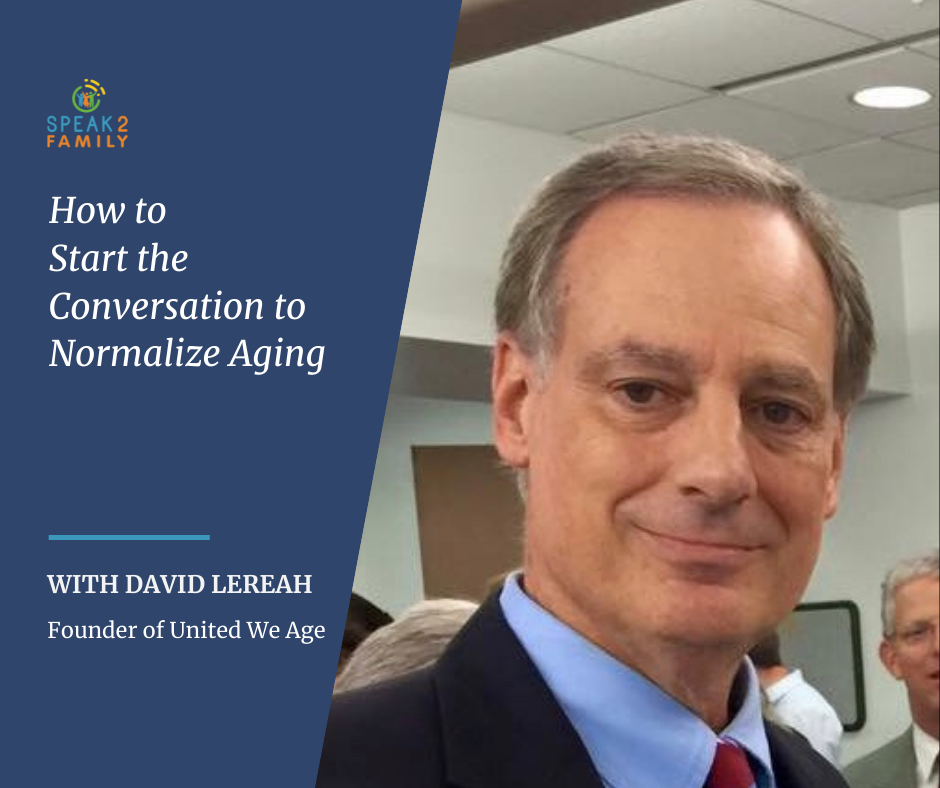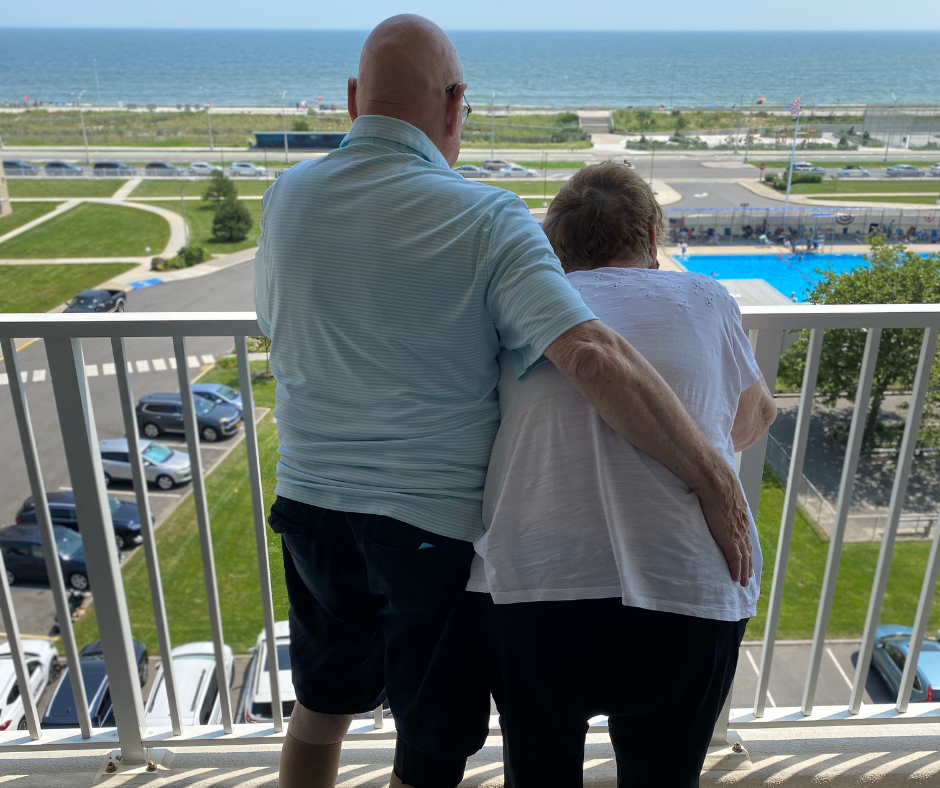How to Start the Conversation to Normalize Aging With David Lereah, Founder of United We Age
David Lereah is the Founder and Executive Director of United We Age, a nonprofit organization, based in Vero Beach, Florida, to serve the...
6 min read
Helen Henglein : May 20, 2021

Aging in place is defined as the ability to remain in your home despite diminishing abilities, which can be a part of the aging process. It is the comprehensive decision to remain in your home until the end of your life as opposed to moving to an assisted living or long-term care facility. Aging in place often encompasses home modifications, family or social supports, and supervision or assistance for safety and well-being. Being an occupational therapist, I recommend that if someone is deciding to stay in their home, they talk with their families, medical professionals, and learn more about helpful tips for aging in place safely.
Occupational therapists are the profession best suited to support an older adult’s decision to remain at home and provide helpful tips for aging in place. This is because OTs look at the whole person, their environment, and what they need to do to live independently. We look at every piece of the puzzle and leave no stones unturned when advising a client on the joint decision to remain at home.
The first area of assessment and intervention would be the person’s safety who wants to live at home. OTs can assess their cognitive abilities, judgment, and decision-making. First, I start by seeing how orientated someone is. For example, do they know the date and month? If not, can they tell me the year and season? For testing functional short-term memory, I ask questions such as, “what did you have for breakfast today?” and “what was for dinner last night” and “at what time did you take your medicine today?”
Safety is a big concern for me. I ask a series of questions such as, “what would you do if you fell?” and, “what do you think you should do if you take the wrong dose of medication?” and, “what would you do if you were supposed to go to the store, but there is ice outside?” I want to see their thought process in emergency situations and judgments of unsafe scenarios. The lower the cognitive level, the more likely someone will need assistance to remain at home safely.
The next area of concern is the accessibility of the living space. Priority areas would be the bathroom, stairs, entryways, lighting, and any areas of clutter. Typically, I recommend adding grab bars in and around the shower, next to the toilet, removing shower doors and replacing them with a curtain, and adding seats to the shower if needed. If the family has a higher budget, I’ll recommend a built-in bench seat, a handheld showerhead, a few temperature and color-changing tiles that let you know if it is too hot, or a cap on the temperature of the hot water heater to prevent burns.
Next, if the patient uses a wheelchair or walking device, it is important that they can navigate steps at the front of the house. If they depend on a wheelchair, I educate the family about ramp installation and dimension requirements for safety and accessibility. For the rest of the home, removing any clutter or tripping hazards is necessary.
Then, I assess the lighting. Is it bright enough for their eyesight? Are the light switches conveniently placed? Is there nighttime lighting? The modifications will depend on the person and their individual needs, but those are some of the basics.
Every home is different and will need specific adjustments to make the space safer for the person who desires to live at home for the rest of their life. Some occupational therapists may have specialized certifications making them more qualified than others to make advanced recommendations, such as a “Certified Aging In Place Specialist” (CAPS) or an “Executive Certificate in Home Modification.”
OTs will also evaluate, assess, and recommend the level of formal assistance a person will or will not need to remain safe at home. Depending on the person, this can look like having a few calls a day from family, to a daily in-person check-in, to a family member coming over at night to assist with showers and dinner, to 24-hour care with an agency. The level of assistance should match their current level of function and reflect their physical and cognitive abilities.
For people without formal assistance, I always recommend daily check-ins with a caregiver. For instance, aging adults can have someone call at the same time every morning or every night before bed. I sometimes recommend making arrangements to call someone after your shower. If the calls are at the same time every day, you can make sure you are next to the phone. If the person does not answer or call back, something might be wrong and warrant an in-person check-in.
Another helpful tip for aging in place that I recommend is having a big calendar, checking it every day, and planning out the month ahead where you can write down important dates and times. For example, you can note when bills are due, when you will go food shopping, when you will do laundry, when you need to organize a pillbox, when you have upcoming appointments, and other aspects of instrumental activities of daily living (IADLs) or health management. The more organized you are, the less likely you are to forget necessary chores.
One other benefit of using a calendar or checklist is that you can use it to stick to a routine. When you have a routine, you are less likely to forget or miss a step of your self-care. A checklist of healthy habits and necessities can keep a person in check with their health. I often include drinking water, with half of it being before lunchtime, to decrease episodes of incontinence and middle of the night bathroom needs. Your checklist can also include daily movement, taking medication, recording vitals, and your mood. In short, routines are a vital part of maintaining independence and staying safe.
Another aging in place tip I also recommend is making home modifications before you need them! Don’t wait until you have a fall and injure yourself to install grab bars and a shower seat. Some simple hacks can make life easier. For example, you can put a few rubber bands around a doorknob and use a suction grab bar on a front open washer or dryer to make them easier to open. Accessibility is a necessary part of living in your own space.
Lastly, I recommend an emergency plan. What will you do if you fall at home alone? Do you have an assigned person to come and check on you if they don’t hear from you within a certain time frame? What will you do if we have a storm and the power goes out? Talking about these situations ahead of time can better prepare individuals with an action plan.
Overall, I think this should be a larger area of concern for our government, local policymakers, and other resource providers. We all know that the Baby Boomers are the biggest generation, and as they age, society needs to identify the upcoming challenges of caring for large numbers of elderly citizens. I foresee insurance companies needing to create better long-term care solutions regarding payments, delivery of services, and quality of services provided.
There are few agencies and vendors who have met my expectations regarding elder care, and I find I am often educating most service providers I come in contact with. Occupational therapists can provide education and training at a systems level to help these companies assist patients with enrollment in services and quality of services. I have assisted many patients on phone calls with insurance companies to help them ask the right questions, advocate for them to get the services they need, or translate what information is being thrown to them. On the other end, operators often talk too fast, give too much information at once, and speak with jargon that isn’t easy to understand. Education about the delivery of information and the emotional impact that this call has on the customer could improve service delivery.
Occupational therapists also have a role to play in caregiver education. Once one of my patients is assigned an agency caregiver, I know I will need at least two sessions to go over the basics of effective and safe care delivery. I teach them everything from safe transfer techniques, how to feed someone, how to safely change their clothes with dignity, how to get someone in and out of bed, and how to communicate with someone who is hard of hearing or has cognitive impairments.
I do not know how detailed the home attendant training is, but when I provide education and training, I often hear that this was never taught to them. Much of what I teach benefits the caregiver just as much as the patient. In all, making their job easier, less stressful, and helping them feel more confident while rendering care. If occupational therapists could provide large-scale in-services to these home attendants, the quality of care would be that much greater to the population in need.
Many communities have some resources for their aging population, but the main barrier is that the people who need these services don’t know about them. Just yesterday, I learned about a seniors fitness class in my community that I had never heard of! I think there is a stigma attached to aging that also keeps the information about resources out of the forefront of community news. When there is a new restaurant or gym in town, everyone knows about it. But, when the service is dedicated to serving the aging population, it doesn’t get as much attention. On the other hand, many smaller and rural communities cannot provide geriatric resources, such as leisure and fitness groups, educational seminars, and community volunteers to assist with driving or shopping.
Another aspect of aging in place is needing home modifications and adaptive equipment. With this comes the question of cost and installation. Unfortunately, many of the products I want to recommend for my patients are too expensive for them. Stairlift installations cost upwards of $3,000 to $6,000, shower seats and tub benches are around $150, and grab bars around $30 to $50, depending on the length. With free market and supply and demand, the costs of these items should be lower. Still, because they are labeled “adaptive” or “assistive devices,” the niche of buyers is smaller, allowing companies to increase the prices.
When my patients need adaptive equipment or devices, especially bathroom equipment, they go through insurance. When they go through insurance, they need to go through getting a doctor’s prescription. Then, they need to get that prescription to a medical supplier. For getting authorization for more expensive equipment like hospital beds, they might need to pay out of pocket and/or wait for delivery. I often recommend going right to Amazon for better price options and faster delivery times.

David Lereah is the Founder and Executive Director of United We Age, a nonprofit organization, based in Vero Beach, Florida, to serve the...

Our Aging Population Across America, 10,000 people are turning 65 every day. That leaves a growing population in high demand for solutions to...

Living Options for Seniors The vast majority of my home health patients all have one wish or goal in common: to be able to stay in their home...